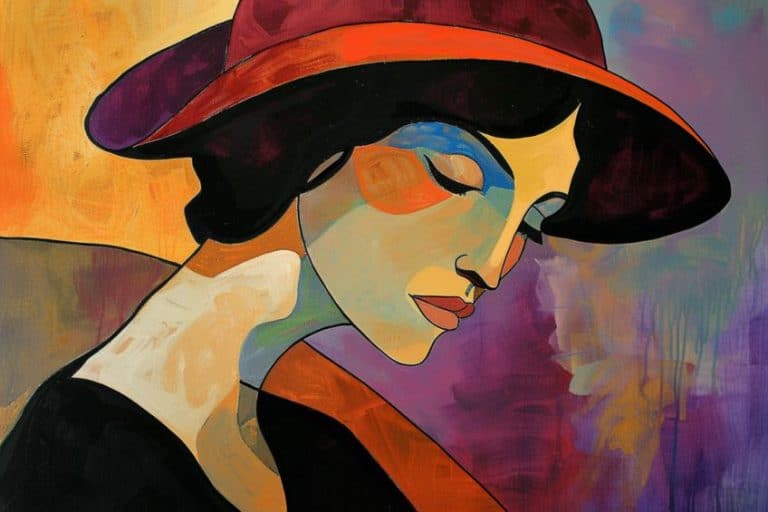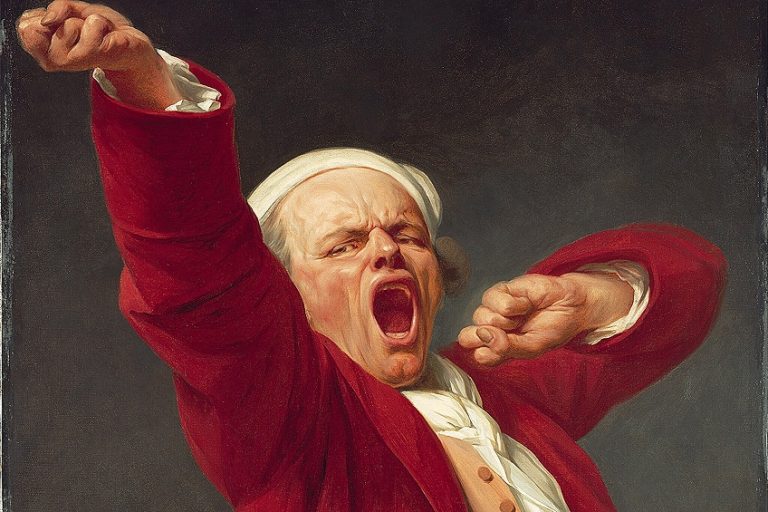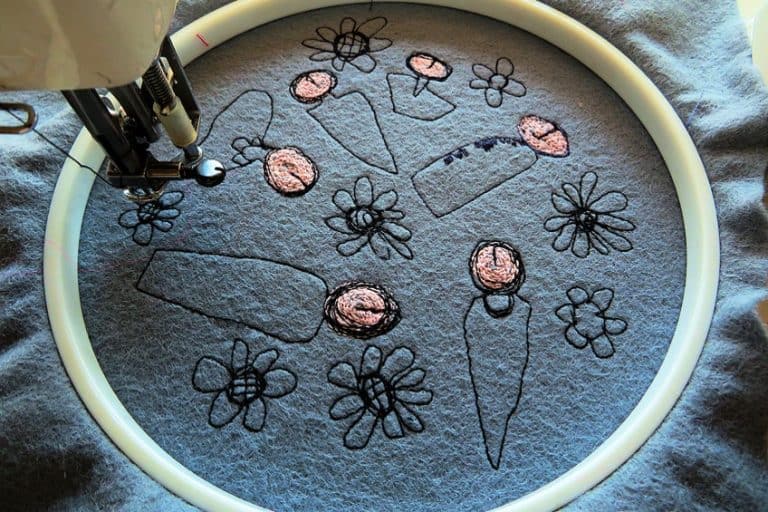Édouard Vuillard – Intimist Maestro of Interiors
Édouard Vuillard was a French painter known for his small-scale interior works that combined flat patterns with delicate color relationships. Édouard Vuillard’s paintings demonstrate his ability to incorporate ornamental elements within a realistic environment. The artist once stated that nothing matters save the spiritual state that allows one to expose one’s mind to an experience and think exclusively about the sensation, all the while trying to represent it. Today, we will be exploring Édouard Vuillard’s biography and artworks.
Édouard Vuillard’s Biography
| Nationality | French |
| Date of Birth | 11 November 1868 |
| Date of Death | 21 June 1940 |
| Place of Birth | Cuiseaux, France |
Édouard Vuillard belonged to the Symbolist group Les Nabis. However, he was less interested in the group’s mystical features and more interested in sophisticated private locations where intellectual conversations about poetry, music, theater, and the occult took place. Along with his friend Pierre Bonnard, he is sometimes referred to as an “intimist” because of his propensity for painting interior and home settings.
Some of these “intimist” artworks were created on a modest size, while others were created on a much bigger scale for the interiors of the persons who commissioned the work.
Childhood and Early Training
Jean-Édouard Vuillard grew up in Cuiseaux, France. However, in 1878, his family relocated to Paris in humble circumstances. Vuillard earned a scholarship to pursue his schooling when his father died in 1884. Vuillard met Maurice Denis, Ker Xavier Roussel, writer ierre Véber, pianist Pierre Hermant, and others at the Lycée Condorcet.
Vuillard started to visit the Louvre on a regular basis, which affected his desire to become a painter rather than follow in his father’s footsteps and join the army.

Vuillard decided to leave the Lycée Condorcet in 1885 to work with Roussel at the workshop of the artist Diogène Maillart. There Vuillard and Roussel learned the fundamentals of artistic instruction. In March 1886, Vuillard enrolled in the Académie Julian, where he was instructed by Tony Robert-Fleury, and encountered Pierre Bonnard, with whom he occupied a workshop. In July of the next year, he completed the École des Beaux-Arts admission exams. In 1888, he was instructed by Jean-Léon Gérôme for around six weeks.
Vuillard began keeping a notebook in 1888, in which he drew drawings of paintings he was studying at the Louvre and jotted down ideas for future paintings.
Vuillard was attracted to the realistic depiction of still lifes and household interiors in these drawings and early works. He was also drawn to the works of 17th-century Dutch painters like Jean-Baptiste-Siméon Chardin. Vuillard kept a private diary from 1888 to 1905, and then again from 1907 until 1940.
Mature Period
Denis convinced Vuillard to enter the brotherhood of Nabis, a tiny group of art students who had formed inside the Académie Julian around Paul Sérusier in 1889. Sérusier had taught his fellow pupils about Synthetism, a type of Symbolism that focused on recollection, creativity, and the use of shape and color to transmit thoughts and ideas, after meeting Paul Gauguin in Brittany.
Vuillard painted his initial decorations for Mademoiselle Desmarais’s house in 1892, on the recommendation of the Natanson brothers.

As a result, he completed several additional contracts of this nature. Vuillard and other artists of Les Nabis had shown small-scale pieces at the Le Barc de Boutteville gallery. His choice of topics, as well as the quiet and cryptic light effects, were influenced by the theater. Aurelien Lugne-Poe, who brought Symbolist drama to Paris with Paul Fort’s Théâtre d’Art, was his closest theater pal. Vuillard not only went to many of the latter’s practices and performances of plays by Henrik Ibsen, Maurice Maeterlinck, August Strindberg, and others, but he also painted scenery, made costumes, and wrote programs.
Vuillard became friends with the brothers Thadée and Alexandre Natanson in the 1890s, proprietors of the intellectual journal La Revue Blanche. Thadée Natanson was the editor-in-chief, and he and his wife, Misia, were good friends of Vuillard’s.
Vuillard’s graphics were published alongside works by Pierre Bonnard, Félix Vallotton, Henri de Toulouse-Lautrec, and other painters in the journal.
Later Years and Death
Vuillard began showing work at the Bernheim-Jeune family’s Parisian gallery in the early 20th century and was later licensed to them. Lucy Hessel, Joseph Hessel’s wife, had become a close friend, counselor, and sitter, and Vuillard’s time was frequently spent with the Hessels’ company, which also included successful performers and writers, as well as affluent business people.
Vuillard began to portray his domestic settings and portraits with a much more perceptible feeling of depth by the 1910s, and portraiture became an increasingly important genre in his work.

Vuillard had little trouble finding sitters; many of them were luminaries of fashionable society, personal acquaintances, or professional colleagues. Later, he worked as a combat artist, drawing men on the front lines. Nevertheless, the start of World War I had little effect on Vuillard’s style or interest in subject matter, and the artist proceeded to concentrate on ornamental schemes, albeit his success would not rival that of the 1890s and early 20th century.
Vuillard was admitted to the renowned Institut de France in 1937, and after a huge retrospective organized by Vuillard’s friend Claude Roger-Marx, he fled and conquered Paris in 1938. Despite his achievements, Vuillard lived a somewhat quiet life, residing with his mother until her passing in 1928 and being a bachelor throughout. He died on the 21st of June, 1940, at La Baule.
Legacy
Édouard Vuillard’s paintings helped build the groundwork for modernist views toward the arts, believing that a painting might create a parallel reality to the rest of the world. Vuillard’s talents as a colorist and tone experimenter have been highly hailed as a Nabi “prophet” of contemporary art.
Furthermore, a contemporary study has highlighted his abstract and decorative assignments as key predecessors of 20th-century modernism, surpassing conventional easel painting and pushing into the art world.

The creator’s large-scale, decorative creations that fused painting and architecture by fusing the flat surface with the two-dimensionality of the surface hailed the central theme of the last century of seeking a more cohesive and stylistic world in which to reside and of reunifying domestic and public spheres.
Vuillard’s incorporation of his figures into a two-dimensional, ornamental backdrop set a crucial precedent for Henri Matisse’s work, which used similar techniques.
Accomplishments
For Vuillard, who was reserved by nature, the inner topic served as a symbol for the inward self, apart from the rest of the world. This is a modernist principle – the idea that one’s perspective, a subjective vision of reality, may provide insight into the truth. Vuillard associated with the fin-de-siècle artistic retreat, employed flat designs into which his people were put to transmit both feeling and concepts. Abstract painting emerged to communicate thoughts that could not be expressed using traditional painterly approaches.

Color and shape could represent feelings that are hard to express verbally. Although the Symbolists were generally anti-utilitarian (and more concerned with art for the sake of art), Vuillard made large-scale panels and canvases that were architectural.
These large-scale works, designed for interior decoration, connected him to other modernists’ desire for the “whole work of art”, which would help integrate society, but modernized it to operate in current interior settings.
Édouard Vuillard’s Paintings
Vuillard’s mother was a tailor who managed her corsetiere from home, allowing her son ample opportunity to examine the colors, patterns, fabrics, and forms of her gowns. He was a constant viewer (and subsequently, photographer) of the interaction between friends and family, all of which is captured in his Intimist paintings, in addition to observing typical scenes of cozy yet active activity. In reality, the rooms he inhabited with his mother for so long were set pieces of his art, painstakingly captured in beautiful mosaics of variegated color and delicate brushwork.
His trained eye and keen attention may be seen in the countless subtle ornamental elements he puts to his canvas, as well as his representation of light.
Dinner Time (1889)
| Date Completed | 1889 |
| Medium | Oil on Canvas |
| Dimensions | 71 cm x 92 cm |
| Location | The Museum of Modern Art, New York |
Vuillard is shown here with his mother, grandma, and Marie, his sister. The artist contrasts the notion of dinnertime, which is often a gathering of human unity and conversation, with the scene depicted here, in which each mute family member inhabits a distinct place, signifying their different inner thoughts. Although there is bread and wine, no one is drinking or eating.
Madame Vuillard occupies the left with her huge lateral and compact shape, hunching over her chore of starting a flame, her twisted elbow and head shriveled down into the neck both shutting out any nearby figures.

Vuillard is separated from the grandmother by a highlight of lighted negative space, who, like Mme. Vuillard, retreats down into herself, her face shown only by a black shadowing region. Marie takes a frontal position facing the observer but appears to shrink into a stiffened facial expression and magisterially gripping a substantial baguette, as if for protection. As he peeks from the backdrop via an open doorway, the artist inhabits a different physical realm.
A tranquil and beautiful painted landscape pulls in on the scenario from above, only highlighting the tensions below it, in a subtle stroke of sarcasm typical of Vuillard. This is an excellent example of Vuillard’s singular ability to change pleasant domesticity in order to uncover the deeper psychological conflict.
The Suitor (1893)
| Date Completed | 1893 |
| Medium | Oil on Millboard Panel |
| Dimensions | 31 cm x 36 cm |
| Location | Smith College Museum of Art, Northhampton |
Vuillard painted several images of women sewing since his mother (pictured at right) had a corset-making store and, based on the appearance of so many colorful fabrics in the workstation, apparently also worked as a seamstress. It has been noted that Vuillard’s paintings frequently exhibit the impact of his theater experience, as shown in this piece with the characters’ postures, movements, and places in space.
The centrally located male figure interrupts the intimate, silent, and inward exercise of sewing.

The individuals appear to be trapped in the contours of their flattened bodies or the patterns of their clothing and surroundings, especially the ladies, who are also shown with the least personality. They are symbolic of the job they do: for instance, the pattern and color of Marie’s outfit are repeated multiple times in the cubes of space surrounding her. Her patterned outfit and surroundings remind me of her day job, which is to create patterned clothes from multicolored bolts of fabric.
This piece exemplifies Vuillard’s distinctive ability to employ color and pattern to represent aspects of being such as work repetition and/or the loss of uniqueness via work.
Interior, Mother, and Sister of the Artist (1893)
| Date Completed | 1893 |
| Medium | Oil on Canvas |
| Dimensions | 46 cm x 56 cm |
| Location | The Museum of Modern Art, New York |
The individuals appear to be trapped in the contours of their flattened bodies or the patterns of their clothing and surroundings, especially the ladies, who are also shown with the least personality. They are symbolic of the job they do: for instance, the color and pattern of Marie’s outfit are repeated multiple times in the cubes of space that encircle her. Her patterned outfit and surroundings remind me of her day job, which is to create patterned clothes from multicolored bolts of fabric.
This piece exemplifies Vuillard’s distinctive ability to employ color and pattern to represent aspects of being such as work repetition and/or the loss of uniqueness via work.
This piece also exemplifies the Nabi credo of preserving the general pattern, the two-dimensional surface, and the ornamental schema. Although gender and class concerns are subtly referred to here, Vuillard’s art also relates to the period when women were entering the labor market.

Mme. Vuillard appears totally at ease, if not in command of her circumstances, whilst the younger generation, embodied by Marie, battles against imprisonment. Portraits in the classic sense are not depicted in this artwork of the artist’s mother and sister. Marie’s posture is that of a puppet, with an upturned and somewhat squeezed nose and a solid black dot of an eye, as if stitched on. This characteristic of a puppet, although moderately amusing, may also inspire melancholy. Mme. Vuillard’s visage, on the other hand, is like a mask atop a strong black silhouette – both rooted and inflexible.
Vuillard’s portraits are among his most expressive and psychologically profound works because of his ability to generalize.
Even when the face characteristics are transformed in Vuillard’s art, they become the very representations of every deep emotion. Vuillard has produced his own more modern portrait: the artist mixes the distinctive traits of the particular person with non-human and generic aspects, allowing him to speak to all mankind symbolically.
Album (1895)
| Date Completed | 1895 |
| Medium | Oil on Canvas |
| Dimensions | 28 cm x 85 cm |
| Location | The Museum of Modern Art, New York |
The title is derived from the album that acts as the picture’s focal point in the middle. With introspective and dreamlike female figures and floral patterns interwoven into patterns and delicately altered tonal values, the artwork has a warm, tapestry-like feel. Vuillard based the piece’s scale on Natanson’s actual residence on the street Saint-Florentin, right off the Place de la Concorde.
The artwork was meant for a vast and open room, and the painting’s setting is supposed to represent Misia’s interest in the English arts and crafts movements.
Vuillard balanced the private and personal subject and handling of the theme in this piece with an eye toward a more public exhibition. Vuillard’s ornamental panels, according to art historian Karen Kuenzli, are a sequence of oppositions between the personal and the communal, sensation and decoration, private and public domains that speak to greater forces that define 1890s modernism.
Advanced painters in the 1890s emphasized autonomous artistic production while also realizing that art needed to be founded on community practices and values if it was to be sustained.
Repast in a Garden (1898)
| Date Completed | 1898 |
| Medium | Oil on Cardboard |
| Dimensions | 54 cm x 53 cm |
| Location | Washington National Gallery |
Vuillard painted this piece using oil that seeped into the brown cardboard, which was left unpainted in areas, resulting in an unusual level of flatness. Formally, it demonstrates a great economy of means as well as a sense of abstract idea in the use of negative space, as the figures become recognized by their surroundings. It’s also rather modest.
There is a tendency to generalize characters or people in which the atmosphere serves to provide the symbolic component.
Symbolist artwork, music, and writing sought purity and simplicity and were bolstered by hints and subtleties that may infer rather than represent directly. Vuillard, like the poet Paul Verlaine, paints the “image” in gray, subtle half-tones, as if on a minor note. Although figurative, the content is created through the aesthetic of densely braided space.
Vuillard was unique in his ability to utilize surface manipulation to convey a psychological underlying to an apparently lovely picture.
The Salon of Mme. Aron (1912)
| Date Completed | 1912 |
| Medium | Oil on Board |
| Dimensions | 56 cm x 52 cm |
| Location | Private Collection |
This picture is an excellent example of Vuillard’s later work. The subject is similar (a calm room with humans), and the colors are opulent, but the picture portrays members of the upper class and is considerably more conservative in its formal components. Here we see him employing time-honored repoussoir characteristics.
The picture’s space has been expanded into a more normal, three-dimensional box-like region into which the figures and items are placed, rather than a flat, patterned surface.
The use of a more conventional area has been related to Vuillard’s increased use of pictures as a source of inspiration for his paintings. Vuillard’s later work is thought to have a less striking and psychological effect than his early work.
He did, in fact, cease presenting his art after 1914.
Recommended Reading
In today’s article, we have learned about Édouard Vuillard’s Biography as well as Édouard Vuillard’s paintings. If this has sparked your interest in the artist, then maybe you would like to discover even more. Check out our list of books to find out what else can be discovered about this artist’s life and work.
Venus Betrayed: The Private World of Edouard Vuillard (2019) by Julia Frey
Vuillard frequently berated himself for giving away too much emotion in his conversations with others. Once a timid man, Édouard Vuillard entered the art scene in the 1880s and remained an active member until just before the start of World War Two. During his career, his paintings revealed his uncertainty with the concepts of love and hatred. Some of his artworks were even left incomplete for months or years.
- Draws on insights and images from Vuillard’s still unpublished diaries
- Demonstrates how Vuillard's art reflects his fraught personal relations
- Highlights many of his finest works
Vuillard: Masters of the Intimate Interior (2002) by Guy Cogeval
Edouard Villard, known for his intimate images of family life, was one of the great post-Impressionist artists, although little is known about him. This lavishly illustrated book examines Vuillard’s relationship with a variety of key aesthetic trends, including the Nabis, Symbolism, and Synthetism. Samples from the artist’s early notebooks, as well as letters between the painter and contemporaries such as Maurice Denis and Pierre Bonnard, fill out this comprehensive study, which will pique the curiosity of all post-impressionist painters.
- Includes extracts from his early journals
- Stunning pictures of his works accompany the text
- Includes letters between the artist and his contemporaries
Édouard Vuillard’s complex, intimate paintings of fin-de-siècle Parisian sitting rooms, kitchens, bedrooms, gardens, and landscapes contributed to the expansion of post-Impressionism, focusing on precise environments rather than human figures. Patterned wallpapers, fabrics, and other accessories create complex weaving of texture, ornamentation, and color in Vuillard’s interiors, blurring the boundaries between subject and field. Édouard Vuillard belonged to the Symbolist group Les Nabis.
Frequently Asked Questions
Why Were Édouard Vuillard’s Paintings Famous?
Although the Symbolists were usually anti-utilitarian (and more concerned with art for the sake of art), Vuillard created large-scale architectural panels and paintings. These large-scale works, intended for interior decoration, linked him to other modernists’ ambition for the complete work of art, which would assist unify society while also modernizing it to operate in contemporary interior settings. For Vuillard, who was naturally reserved, the topic of the interior served as a symbol for the inward self, apart from the rest of the world.
Who Was Édouard Vuillard?
Édouard Vuillard’s paintings contributed to the development of modernist attitudes toward the arts, with the belief that a painting might establish a parallel reality to the rest of the world. Vuillard’s abilities as a colorist and tone experimenter have earned him praise as a modern art Nabi so-called prophet. Furthermore, recent research has identified his abstract and ornamental works as important forerunners of 20th-century modernism, exceeding traditional easel painting and breaking into the art world.
Isabella studied at the University of Cape Town in South Africa and graduated with a Bachelor of Arts majoring in English Literature & Language and Psychology. Throughout her undergraduate years, she took Art History as an additional subject and absolutely loved it. Building on from her art history knowledge that began in high school, art has always been a particular area of fascination for her. From learning about artworks previously unknown to her, or sharpening her existing understanding of specific works, the ability to continue learning within this interesting sphere excites her greatly.
Her focal points of interest in art history encompass profiling specific artists and art movements, as it is these areas where she is able to really dig deep into the rich narrative of the art world. Additionally, she particularly enjoys exploring the different artistic styles of the 20th century, as well as the important impact that female artists have had on the development of art history.
Learn more about Isabella Meyer and the Art in Context Team.
Cite this Article
Isabella, Meyer, “Édouard Vuillard – Intimist Maestro of Interiors.” Art in Context. May 12, 2022. URL: https://artincontext.org/edouard-vuillard/
Meyer, I. (2022, 12 May). Édouard Vuillard – Intimist Maestro of Interiors. Art in Context. https://artincontext.org/edouard-vuillard/
Meyer, Isabella. “Édouard Vuillard – Intimist Maestro of Interiors.” Art in Context, May 12, 2022. https://artincontext.org/edouard-vuillard/.













